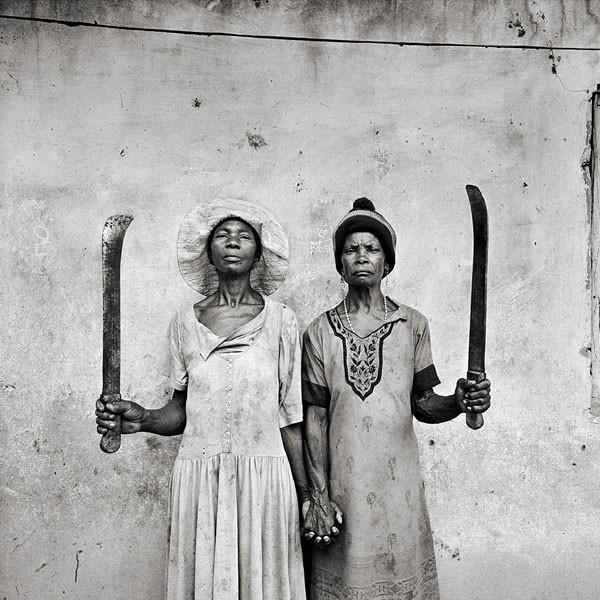Artist’s rights and the market – Part 2
![Thomas Rowlandson (1756–1827) and Augustus Charles Pugin (1762–1832) (after) John Bluck (fl. 1791–1819), Joseph Constantine Stadler (fl. 1780–1812), Thomas Sutherland (1785–1838), J. Hill, and Harraden (aquatint engravers)[1]](https://monitortribune.com/wp-content/uploads/2022/02/2022-02_Microcosm_of_London_Plate_006_-_Auction_Room_Christies_colour_1.jpg)
The question arises as to how we can make the art market more equitable and fairer towards the artists and their heirs in ways that are workable in the Caribbean context and without creating a prohibitive situation that would kill the market altogether, as this would be in nobody’s interest.
One answer is that there is a need for greater transparency and disclosure. Galleries and art dealers in Jamaica, for instance, have conventionally refused to disclose to artists who bought work, citing confidentiality. My own position is that artists, or their estates, have a right to know who owns their work. They also have a right to know, and to have a reasonable say in how much the work is sold or resold for, beyond the obvious obligation for dealers to disclose the sales price for work they sell on commission on behalf of the artists. It can be detrimental to an artist’s market if the work is resold below its first sale prices. Such an obligation to disclose and consult will, no doubt, be resisted by certain collectors, but I believe that it is ethically necessary. Artists already maintain the intellectual and creative property rights of their work under the relevant copyright laws, and this cannot be managed properly without access to current ownership information.
In many jurisdictions, measures have been put in place to ensure that artists and their estates benefit from the resale and use of their work, beyond the already well-established reproduction rights. Resale royalties are one such measure and involve the payment of a royalty percentage to the artist or the estate on any second sales of their work, whether by a dealer or auction house. In the UK, for instance, resale royalties vary from four to 0.25 per cent, depending on the sales price. Some restrictions apply. For instance, the right to resale royalties only comes into effect after three years, at least for works sold for £10,000 or less, and does not apply to private sales or sales to a museum. The right to resales royalties runs for as long as the work remains in copyright. (Read more here: https://www.gov.uk/guidance/artists-resale-right).
Another such measure is exhibition fees, by which a payment reverts to the artist for the inclusion of their work in an exhibition, whether this involves existing or new work. In countries where Arts Council funding is available for exhibitions, such a payment is usually mandatory. Exhibition fees can be counterproductive, however, especially where culture institutions operate on shoestring budgets, as is all too common, and are in no position to make such payments for their exhibitions or would be constrained to exhibit less artists and less frequently. With some creative thinking, and a reasonable approach by all parties, it may, however, be possible to reach compromises that are workable in the Caribbean context.
With the fostering of greater artists’ rights also comes obligations, however. One is the need for greater formalization and documentation of the art market, and for artists and other participants who earn more than any tax-free threshold to pay income and business taxes. This poses a big challenge in the Caribbean, where art markets typically function with a significant degree of informality and are largely off the record. This informality, however, comes at a cost, at least when it comes to the ability to enforce artist’s rights, which cannot be left to goodwill and unenforceable expectations of ethical conduct. It also means that artists must be smarter about managing their legacies, with a duly appointed estate with an accessible person who is empowered to grant IP permissions and to collect royalties. It is in nobody’s interest for there to be orphaned works of art.
Too much emphasis has been placed, in the Caribbean, on enforcing reproduction rights, which are sometimes made difficult and costly for non-profit and educational purposes, as I have experienced on a few occasions when I was faced with unreasonably high demands for payment for reproductions in academic publications for which I was myself not paid or reimbursed. In such instances, I simply had to decide not to write about the artist or work, or not to reproduce the work in question. It is actually in the interest of the artists for the work to be reproduced and written about critically and academically, as this enhances their market position, although royalties of course have to be paid for commercial, for-profit reproductions. The focus on intellectual property rights should, in my view, be on garnering benefits for the artists from where actual profits are made and that is most likely to happen in the art market.
There have been artists’ rights groups in the Caribbean (Representing Artists in Barbados comes to mind) and obviously there is a need for well-organized national and regional lobby groups to agitate on behalf of the artistic community. Elsewhere, artist’s rights are often administered by Arts Councils and that, too, is something that needs to be looked at in the Caribbean, supported by appropriate legislative change.
Dr Veerle Poupeye is an art historian specialized in art from the Caribbean. She lectures at the Edna Manley College of the Visual and Performing Arts in Kingston, Jamaica, and works as an independent curator, writer, researcher, and cultural consultant. Her personal blog can be found at veerlepoupeye.com.






